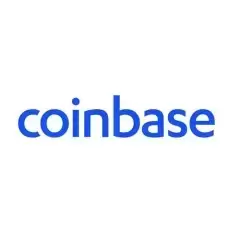 |
|
 |
|
 |
|
 |
|
 |
|
 |
|
 |
|
 |
|
 |
|
 |
|
 |
|
 |
|
 |
|
 |
|
 |
|
Cryptocurrency News Articles
Pi Network: Is it the Biggest Crypto Rug Pull of 2025?
May 20, 2025 at 09:25 pm
In what some are now calling the largest crypto rug pull of 2025, Pi Network—once hailed as a revolutionary mobile mining platform—has come under intense scrutiny

In a shocking turn of events that some are calling the largest crypto rug pull of 2025, Pi Network—a mobile mining platform that has come under increasing scrutiny of late—has seen its token price plummet and its narrative unravel.
Sharing key investigative insights from an X account, known as “Atlas,” a vivid picture emerges of a cryptocurrency project built on hype, vague promises, and a lack of decentralization, ultimately leading to potential fraud against millions.
The Rise of Pi Network
Launched with the vision to democratize cryptocurrency mining via smartphones, Pi Network quickly attracted millions of users. The premise was simple: mine Pi tokens for free through a mobile app and reap the rewards once the project went live.
However, with every passing year, the mainnet launch was further postponed as the team opted to keep the project in a closed beta. Despite the delays and the lack of tangible progress, users remained optimistic, fueled by the promise of future rewards and the close-knit community fostered by the project.
According to Atlas, who has been diligently piecing together the events leading up to the collapse, Pi finally opened its Mainnet in early 2025 and the token began trading. Speculation and optimism drove the price to surge from $0.66 to $1.60.
However, even as the token hit new highs, there were troubling signs. The lack of any real technological milestones was evident, and dApps, which were promised to be a key part of the Pi ecosystem, were nowhere in sight.
The Collapse
In May 2025, shortly after Pi Network made a hyped appearance at Consensus 2025, the price collapsed by more than 50% within days. The timing coincided suspiciously with the announcement of a $100 million VC fund—a move that was seen by many as an attempt to distract from the lack of progress.
As users waited patiently for functional dApps or any signs of decentralization, insiders began to move.
Earlier this week, blockchain analyst and community figure Dr. Picoin, known for his work on Chainalysis and cryptocurrency trends, made a startling observation. A 12 million Pi token transfer was detected, flowing from a wallet—GABT7EMP—allegedly controlled by the Pi Core Team, to another at the peak of the bear market price.
The tokens were dumped at the height of the market, and according to data from Piscan, there were indeed massive outflows from this wallet.
“They sold while you were distracted by hype, announcements of a $100M VC fund, and new PI dApps that will never come,” Dr. Picoژنs comment sparked a wave of panic among Pi Network users, further accelerating the crash.
A Pattern of Deception
According to Atlas’s in-depth thread, the Pi Network team has consistently used distraction tactics to maintain community interest. Instead of delivering on the expected 100 dApps and decentralized governance, they rolled out vague promises of Web3 integrations and VC funding rounds.
Critical questions remain unanswered. Where is the decentralized governance that was promised? What happened to the dApps that were supposed to be built on the Pi Chain? And how does a closed beta token generate yield products, as claimed by the Pi Core Team?
These questions are particularly pertinent considering the large-scale token movements detected by Dr. Picoin. If the reports of the leaked email and the integration of the FTX Pay widget are true, then it seems the Pi Core Team was actively involved in selling their tokens at the peak of the market.
Past Red Flags Ignored
This isn’t the first time that Pi Network has come under the scanner for fraudulent activity. Back in 2021, 17GB of user data from Vietnam was leaked online, and Chinese regulators had warned about Pi’s “free mining” model being a scam. Even the CEO of Bybit had called out the project as a scam years ago.
Despite these warnings and the fact that only 100,000 out of 60 million Pi users are said to be actively using their wallets, according to data from Nansen, belief in the project remained strong. However, as Atlas points out, the number of active wallets on the network is still suspiciously low.
This raises further doubts about the project’s true adoption rate versus the inflated user metrics that the Pi Core Team often boasts about. Ultimately, these new insights add another layer of complexity to the unfolding story of Pi Network.
A Funnel, Not a Blockchain?
Is Pi Network truly a blockchain project—or just a clever marketing funnel driven by referrals and speculation? There is still no DAO, no open-source code, and no functional ecosystem. Core control remains centralized, and growth is fueled by invitation codes rather than utility.
“This isn't innovation—it's marketing,” concludes Atlas, who has been meticulously documenting this saga and inviting
Disclaimer:info@kdj.com
The information provided is not trading advice. kdj.com does not assume any responsibility for any investments made based on the information provided in this article. Cryptocurrencies are highly volatile and it is highly recommended that you invest with caution after thorough research!
If you believe that the content used on this website infringes your copyright, please contact us immediately (info@kdj.com) and we will delete it promptly.
-

-

-

-

-

-

-

-

-

- AI, Crypto, and Projects: Navigating the Future of Digital Assets
- Aug 04, 2025 at 01:29 pm
- Explore the convergence of AI and crypto projects, uncovering key trends, insights, and potential investment opportunities in this dynamic space. From AI-powered trading to blockchain solutions, discover the future of digital assets.





























































